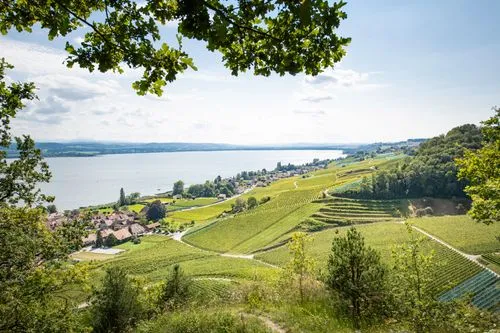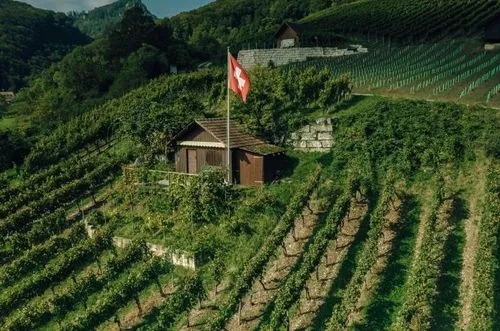Gamay

Grape variety Red
Serving temperature:
15-17°C
Technical details Gamay
Wine-growing area in Switzerland: 1,050 hectares
The taste of Gamay
Gamay produces light, fruity wines that are appreciated for their freshness and liveliness. Typical aromas are of red berries such as cherries, raspberries and strawberries, often accompanied by a touch of pepper or violet.
Gamay wines generally have a marked acidity and light tannins. In Switzerland, Gamay is often vinified as a single grape variety, but it can also be found in blends, one of which is Dôle, where it is made with Pinot Noir.
Food and wine pairings with Gamay
Gamay is perfect with light, simple dishes. It goes particularly well with poultry and is also great with cold meats. Its fruity freshness is an ideal complement to soft cheeses such as Brie or Tomme. Gamay is also an excellent choice for vegetarian cuisine, such as mushroom dishes and quiches.
History and culture of Gamay
The Gamay red grape variety originated in Burgundy in France. By the 19th century, Gamay found its way to Switzerland and was quickly appreciated for its adaptability and fruity character.
The grape variety thrives particularly well in limestone and granite soils and benefits from the temperate climate of French-speaking Switzerland. It ripens early and is susceptible to disease; on rich soils, yield control is necessary.
Distribution of Gamay in Switzerland
Gamay is the third most common red grape variety in Switzerland, and is particularly widely grown in cantons Geneva, Vaud and Valais.
Distribution of grape varieties
Gamay is grown in several wine regions
44%
30%
27%
0%
FAQ: Frequently asked questions about the Gamay grape variety
Gamay is the grape variety behind the famous red wines from the Beaujolais area of France, in southern Burgundy. As well as red wines, which make up the bulk of Gamay production, rosé wines and even some sparkling wines are also produced elsewhere, from Gamay. The difference therefore lies in geographical origin and stylistic guidelines: Beaujolais is a protected name for wines from this area, while Gamay is the grape variety, which can have a variety of interpretations.
Gamay often has a more floral nose than Pinot Noir. It has a more pronounced minerality and can have slightly higher acidity. Gamay produces higher yields, which often makes it a cheaper alternative to the more elegant and complex Pinot Noir.
Gamay wines are generally drunk young, to take advantage of their fruity freshness and liveliness. They are generally at their best 1 to 3 years after bottling. However, top-quality Gamay wines can be kept in optimal conditions for 5 to 10 years, or even longer.
To visit our site, you must be of legal drinking age in your country of residence.




